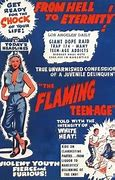Abel Ferrara might have the most uneven filmography of all time. For every certified classic like Ms. 45 or Fear City, there’s a forgettable turd like Cat Chaser or Dangerous Game. Now, I don’t claim to have seen every one of his films, but of the ones I’ve seen, New Rose Hotel has got to be the worst.
Christopher Walken and Willem Dafoe star as two seedy businessmen who are trying to put one over on a brilliant Japanese scientist in the not-too distant future. The plan is to pay a hooker (Asia Argento) a million bucks to seduce the poor dope and break his heart. Things run smoothly at first, but the situation gets complicated when Dafoe falls in love with her.
The script was based on a story by none other than William Gibson. Despite that fact, it’s curiously low on any Sci-Fi or cyberpunk touches. (The only slightly futuristic touch is that characters using what looks like prototype iPhones.) It’s also packed to the gills with lots of annoying handheld video segments that act as surveillance footage of the scientist. These sequences were wholly unnecessary, and the constant shaky-cam camerawork is often hard to take. The gratuitous repeated scenes and useless slow-motion shots only exasperate the issue.
New Rose Hotel might’ve gotten a pass if the cast came loaded for bear. Sadly, this wasn’t the case. Walken nibbles at the scenery, but he doesn’t quite make a meal out of it. While it is fun seeing him paired with Dafoe, their scenes are lukewarm at best and shockingly underwhelming at worst. Dafoe is strangely passive for the most part, and there’s next to no chemistry between him and Argento, which doesn’t help matters either. Asia’s easily the best thing about the movie and her brief nude scenes are about the only thing that keeps you interested.
Walken gets the best line of the movie when he tells Dafoe, “The hair on a snatch could pull a battleship!”






